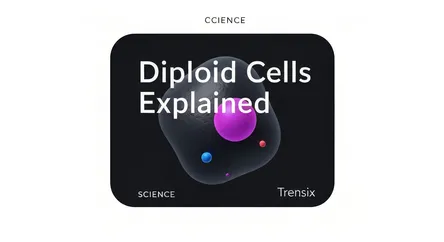Science
Diploid Cells Explained

Discover diploid cells, which carry two sets of chromosomes. Learn why this genetic blueprint is fundamental to human life, health, and heredity.
What is it?
A diploid cell is a cell containing two complete sets of chromosomes, represented by the notation 2n. In sexually reproducing organisms, one set is inherited from each parent. Most cells in the human body, known as somatic cells, are diploid, containing 46 chromosomes arranged in 23 pairs. This is distinct from haploid gametes (sperm and eggs), which have only a single set (n). This dual set of genetic blueprints is fundamental to the life cycles of most complex organisms, providing a rich source of genetic information for development and function.
Why is it trending?
As a cornerstone of biology, the concept of diploidy is always relevant. Its importance is highlighted by ongoing advancements in genetic research, reproductive medicine, and our understanding of hereditary diseases. As technologies like gene editing (CRISPR) become more sophisticated, comprehending diploid genetics is crucial. It remains a foundational topic in science education and is central to discussions about evolution and inheritance, ensuring its place in the scientific spotlight.
How does it affect people?
Diploidy is fundamental to human health. It fosters genetic diversity by combining genes from two parents, crucial for adaptation. Having two copies of each gene provides a "backup," which can protect against harmful mutations. However, errors during cell division can lead to an incorrect chromosome number (aneuploidy), with significant consequences. For example, conditions like Down syndrome result from an extra chromosome, directly impacting an individual's health and development, illustrating the critical importance of maintaining the correct diploid state.